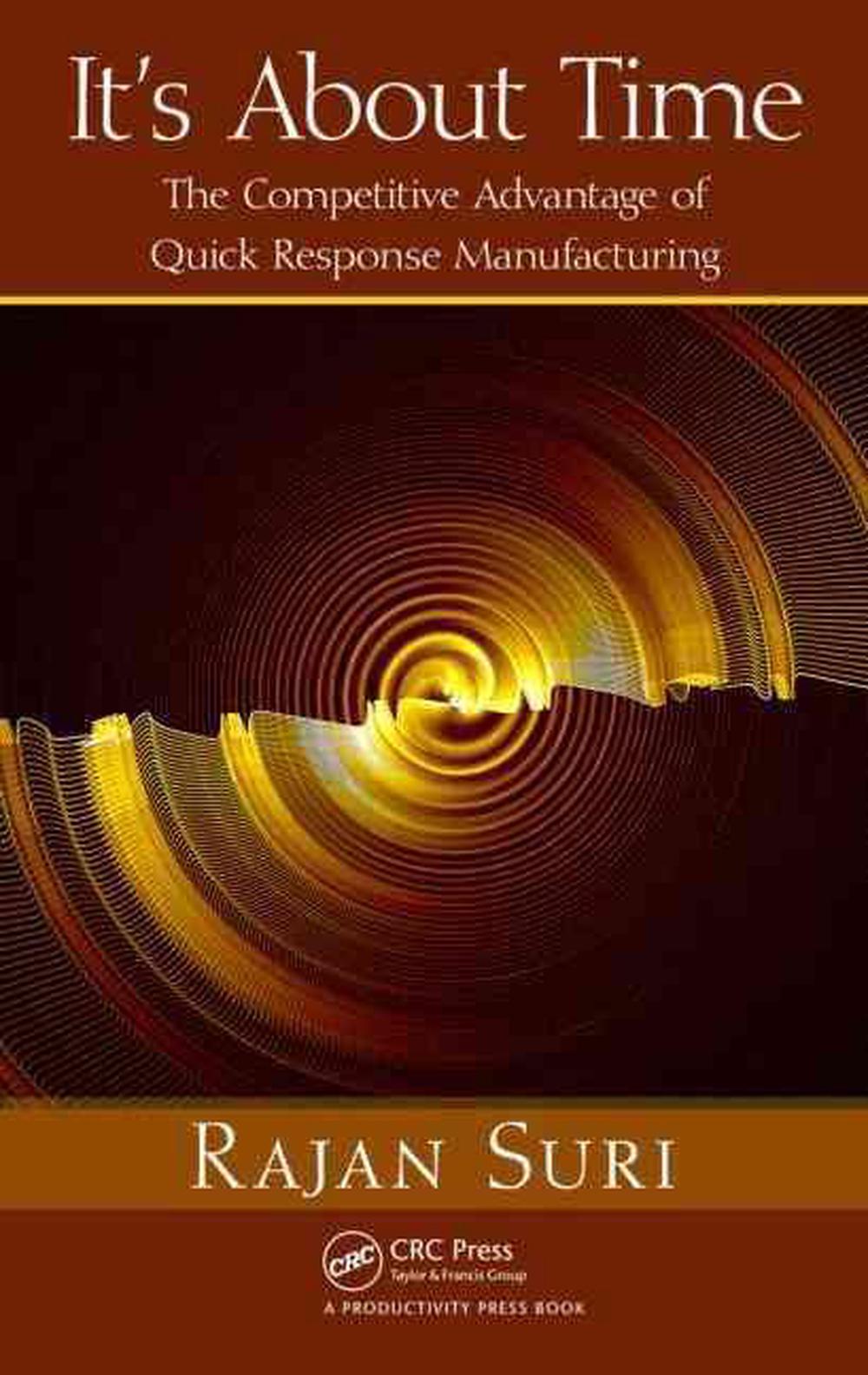
When you click on links to various merchants on this site and make a purchase, this can result in this site earning a commission. Affiliate programs and affiliations include, but are not limited to, the eBay Partner Network.
It's About Time: The Competitive Advantage of Quick Response Manufacturing by Ra

- Item No : 388616903378
- Condition : Brand New
- Brand : No brand Info
- Seller : the_nile_uk_store
- Current Bid : US $83.99
-
* Item Description
-
The Nile on eBay

It's About Time
by Rajan Suri
Presenting the developments in QRM since the publication of Rajan Suri's landmark text, Quick Response Manufacturing, this book illustrates how QRM can not only reduce lead times but also improve quality, reduce operating costs, and enable companies to gain a substantial market share. It explains how factories in advanced nations can us
FORMAT
HardcoverLANGUAGE
EnglishCONDITION
Brand New
Publisher Description
In the decade since the publication of Rajan Suri's landmark book, Quick Response Manufacturing, the innovative principles of QRM have been proven with impressive results at many companies, big and small, in a variety of industries. While the key principles of QRM remain unchanged, after a decade of teaching QRM workshops to senior executives, Suri has developed a clear, concise, and accessible method of presenting QRM strategy using four core concepts: 1. The Power of Time -- the huge impact time has on your entire enterprise 2. Organization Structure -- how to structure your organization to reduce lead times 3. System Dynamics -- understanding how interactions between jobs and resources impact time to make better decisions on capacity, lot sizes, and similar issues 4.Enterprise-Wide Application -- QRM is not just a shop floor strategy, it extends across your whole enterprise including material planning and control, supply management, office operations, and new product introduction Presenting new case studies on QRM implementation, It's About Time: The Competitive Advantage of Quick Response Manufacturing illustrates how QRM can not only reduce lead times but also improve quality, reduce operating costs, and enable companies to gain substantial market share. This practical reference explains how factories in advanced nations can use QRM strategy to compete with manufacturers in low-wage countries. In addition, it provides helpful pointers for QRM implementation, including accounting strategies, novel cost-justification approaches, and a stepwise process for implementation. Also included is a bonus CD with five appendices that provide a number of practical details to assist in the success of your QRM implementation.When you are ready to start implementing QRM, you will find that these appendices contain time-saving tips to help you work through implementation issues--including simple calculation methods and tools to support the design of your QRM strategy. The author, Rajan Suri, recently became one of only 10 people to be inducted into Industry Week's 2010 Manufacturing Hall of Fame.
Table of Contents
The Power of Time. Organizational Structure for Quick Response: QRM Cells, Teamwork, and Ownership. Understanding and Exploiting System Dynamics Principles. A Unified Strategy for the Whole Enterprise. A Roadmap for QRM Implementation. Index. About the Author. Bonus CD: Appendix A: Tips for Calculating Manufacturing Critical-Path Time (MCT) and Creating MCT Maps. Appendix B: Practical Examples of Focused Target Market Segments (FTMS). Appendix C: Examples of How to Think Outside the Box When Creating Quick Response Manufacturing (QRM) Cells. Appendix D: Simple System Dynamics Calculations for Quick Insights. Appendix E: Implementing POLCA: The Material Control System for Low-Volume and Custom Products.
Review
Suri's work is refreshingly logical. And for a book having fewer than 200 pages, it's incredibly comprehensive, covering shop floor part flow; the front office; engineering; new-product development; scheduling; supplier strategies; and even basic accounting issues, including an insightful discussion of how a shop allocates overhead and the effect it has on shop operations.Most refreshing of all, not once does Suri mention anything about 'doing more with less.' Under QRM, if demand rises, companies should indeed invest in machines and people to build in that excess capacity and ensure utilization doesn't head into dangerously high territory. QRM does demand that workers perform myriad functions, set up more often, and manage product flow. But it doesn't demand that they put in long hours to get the job done. During a time when so many companies are reluctant to add to their payrolls, that's a powerful message.
-Tim Heston, Senior Editor, FMA Communications Inc., in The Fabricator, October 2011Review Quote
Suri's work is refreshingly logical. And for a book having fewer than 200 pages, it's incredibly comprehensive, covering shop floor part flow; the front office; engineering; new-product development; scheduling; supplier strategies; and even basic accounting issues, including an insightful discussion of how a shop allocates overhead and the effect it has on shop operations. Most refreshing of all, not once does Suri mention anything about 'doing more with less.' Under QRM, if demand rises, companies should indeed invest in machines and people to build in that excess capacity and ensure utilization doesn't head into dangerously high territory. QRM does demand that workers perform myriad functions, set up more often, and manage product flow. But it doesn't demand that they put in long hours to get the job done. During a time when so many companies are reluctant to add to their payrolls, that's a powerful message. -Tim Heston, Senior Editor, FMA Communications Inc., in The Fabricator, October 2011 Heston, Senior Editor, FMA Communications Inc., in The Fabricator, October 2011
Details
ISBN1439805954Language EnglishISBN-10 1439805954ISBN-13 9781439805954Media BookFormat HardcoverImprint Productivity PressCountry of Publication United StatesDEWEY 658.5Subtitle The Competitive Advantage of Quick Response ManufacturingAuthor Rajan SuriShort Title ITS ABT TIME W/CDPlace of Publication PortlandIllustrations 7 Tables, black and white; 27 Illustrations, black and whiteAffiliation Founding Director, Center for Quick Response Manufacturing, Madison, Wisconsin, USAAU Release Date 2010-03-31NZ Release Date 2010-03-31US Release Date 2010-03-31UK Release Date 2010-03-31Pages 228Publisher Taylor & Francis IncYear 2010Publication Date 2010-03-31Alternative 9780367480288Audience Professional & Vocational


















